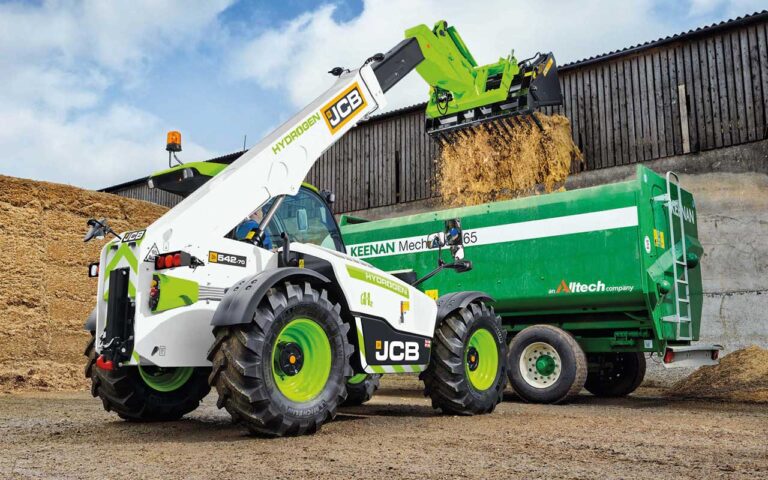Farming offers a unique challenge for alternative fuels. Unlike a car, which has a static load, our needs aren’t dictated by the range. Instead, the changing loads have a direct bearing on the suitability of diesel alternatives.
Similarly, the availability of these fuels has a real effect on their uptake. Supply chain, storage and refuelling times can make the difference between a widely accepted fuel or one that falls by the wayside.
An easy switchover has been available for some time. Most engines are now ready for hydrotreated vegetable oil (HVO), enabling those who are particularly conscious of their tailpipe emissions to move over to this transition fuel.
At the end of 2023, Claas announced that its Stage V engines would all be compatible with HVO fuels. Following this, the UK team, headed up by Aaron Geary, senior technical training instructor and technical support, conducted a series of tests to examine the viability of the fuel.
“We tried to replicate real-world conditions to the best of our ability,” he explains. “So the Arion 630 used had 1,000 hours on the clock, and all our equipment was tested to ensure a high level of accuracy.”
One potential issue with HVO is that it is around 7% lighter than diesel, but the tests showed this did not significantly affect its power density, which dipped 5.5% per litre when compared to diesel.
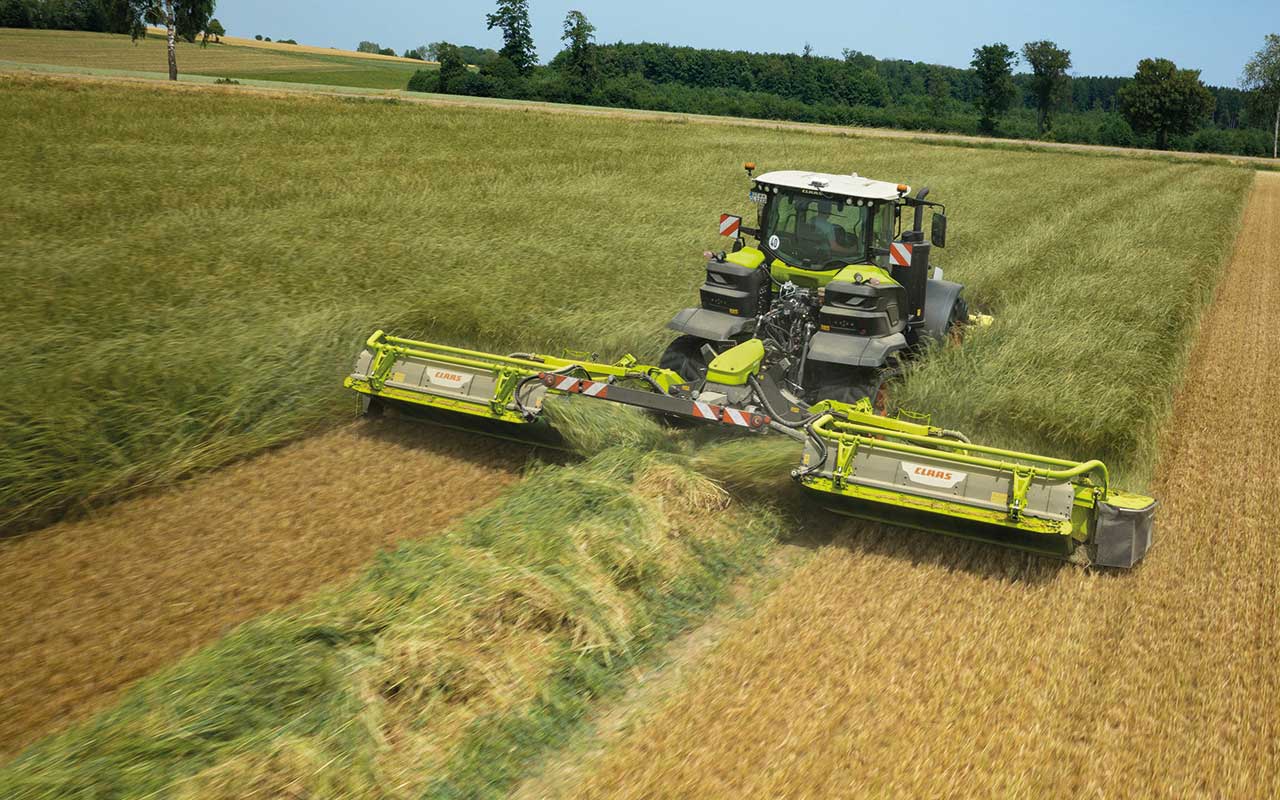
It can also handle more extremes in temperature, remaining fluid all the way down to -34C, and offers up to a 90% reduction in carbon footprint.
“From our own testing, we found HVO consistently provided 0.6% more power and 1.1% more torque than EN590 Winter diesel,” he says. “When compared to EN590 Summer diesel, HVO provided 0.3% more power and 1.2% more torque.
“When compared to both fuels, HVO delivered peak torque at 4.7% lower rpm. All the above factors prove to us that HVO shouldn’t negatively affect machine performance.
The fuel consumption results were less decisive. There were conditions where HVO had an advantage and conditions where it didn’t, but overall the differences were in the region of 1-2%, so not really noticeable. The same can be said for DEF consumption values, as the differences were smaller – about 1%.”
While the performance statistics look good, Aaron is quick to point out that he does believe HVO will be a transition fuel for the industry.
One of the current roadblocks facing red HVO is its supply and the price. At present, the cost per litre is significantly higher than that of red diesel.
“It still represents a good opportunity to start that process of transitioning away from diesel, because it only requires a change of fuel, rather than any changes in equipment or ways of working.”
Looking at electric
Like with the automotive industry, one of the first alternative power sources to be adopted has been electricity. It has a lot of advantages due to the instantaneous power and torque. All of this sounds ideal for load-intensive work, but it comes with disadvantages.
Again, similar to the automotive industry, electric vehicles in agriculture come with a type of range anxiety.
Battery packs are expensive and heavy, with a low power density when compared to combustion engines, meaning the advantages are offset by the limited running time afforded. As such, manufacturers have kept the technology within the lower power brackets.
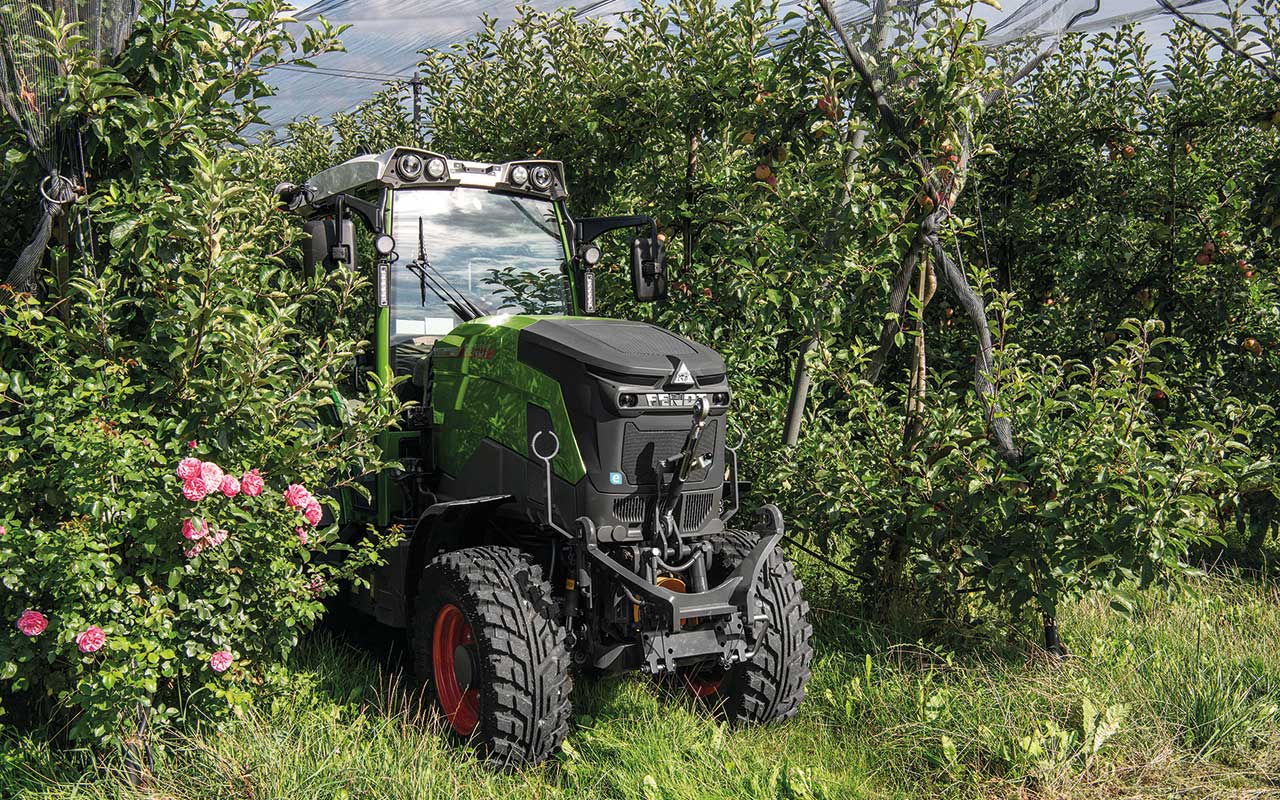
In the case of Fendt, the e100 Vario enables the operator to adapt the output from the 100kWh battery, changing between 68hp, 75hp and 90hp equivalence.
Ed Dennett, marketing manager, acknowledges the limitations of electric, but adds that the advantages of electric are that it is a proven technology, with an easily accessible infrastructure.
“One of the major issues with any alternative fuel is the customer’s access to it,” he says. “Electric isn’t going to be able to replace high-horsepower combustion engines, but up to around 100hp it fits, able to complete short bursts of intensive work or longer stretches of less-demanding tasks.”
Fendt’s parent company, Agco, is looking at other alternatives, with the Massey Ferguson Beauvais plant heading up a consortium to develop hydrogen storage tanks. Ed notes that hydrogen, or hydrogen fuel cells, have potential, but again this needs to be balanced against several pitfalls.
“One is the availability of hydrogen, two is its volume and how you compress it sufficiently to store enough for a reasonable run time, and third is how you use it.
“Fuel cells work, but can be fickle in unclean environments, and burning hydrogen – while possible – is a very energy-intensive way of using it. For the time being, biofuels seem to provide the best stopgap until these other forms of power are researched further.”
An area where electric power has proven successful is in material handling. As well as using a number of engines that are HVO-ready, Merlo has adopted electric power with its 100% eWorker telehandler.
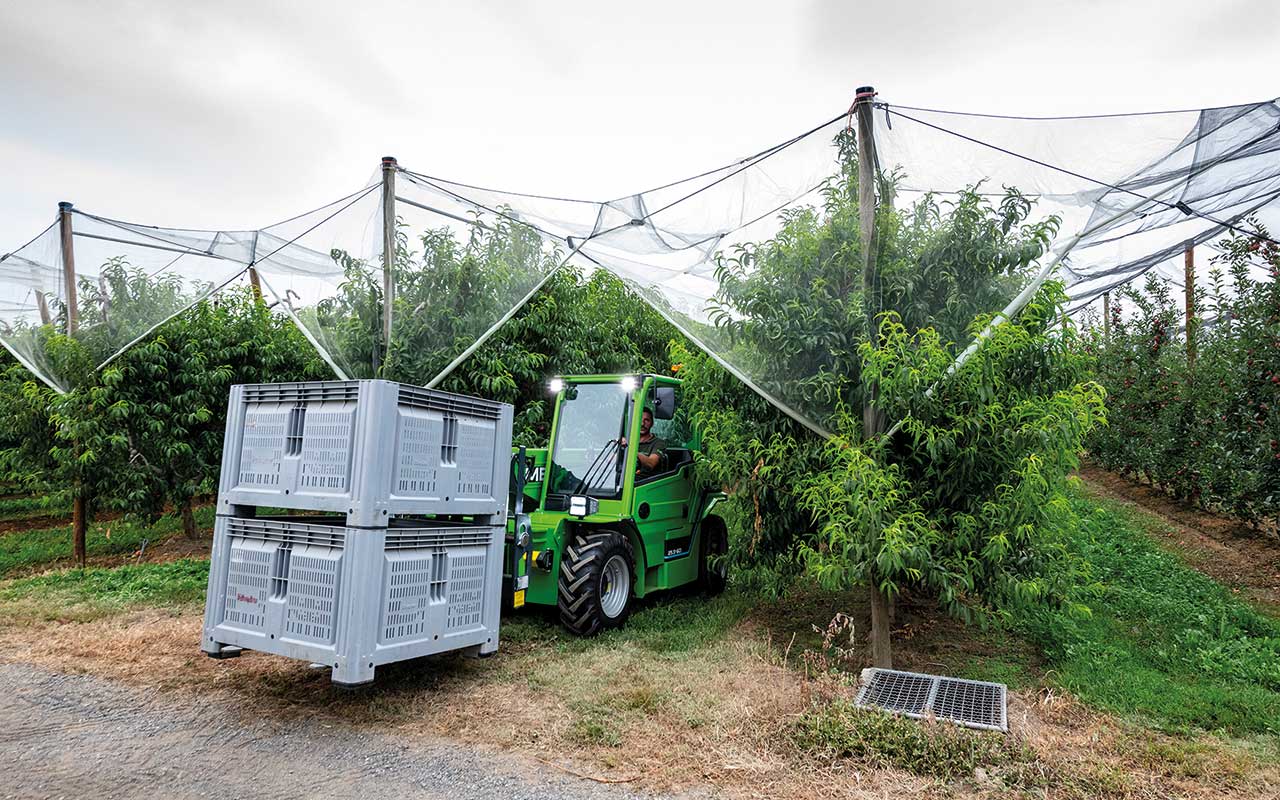
Shaun Groom, Merlo UK general manager, explains that the use of electric power is dependent on the company producing a machine that could comfortably run for a full working day.
“It’s still early days for electric machinery, both in construction and agriculture, and there is understandably concern over battery life,” he says. “Our focus was on designing a machine that offered an eight-hour runtime.”
He acknowledges that this has been easier for construction customers, who often have easy access to charging on site. However, testing on farms has shown a similar runtime, often exceeding eight hours if on light duties.
“The great thing about electric is that when you’re not using it, it doesn’t tick over like a diesel, so that battery life can stretch far beyond what is expected.”
Still, there is the risk of having a long day in the field and the battery running out. Shaun says there is still a lot of development to be done in battery technology, and the company is adding the option of automotive-style fast charging so that the eWorker can be charged at garages if required.
“Our lead acid batteries are proven on the market, and fully recyclable, which means we can reduce the carbon footprint throughout the full supply chain,” he adds.
“As for the future, Merlo hasn’t aligned itself with a diesel alternative yet, but as battery technology continues to improve, there is scope for 3t- or 4t-capacity telehandlers with the same eight-hour running time.”
Means of production
Energy independence is one of the easiest ways for the carbon footprint of fuels to be reduced. One of the advantages of electric is that if a grower is producing their own power through solar, wind turbines or through an anaerobic digester and have excess after selling into the grid, this can be used to power equipment on the farm.
CNH has also focused on this energy independence. It offers a range of electric machines, in New Holland liveries, at the bottom end of the range, but its most-publicised developments in alternative fuels has been the New Holland Methane Tractor.
As with other alternative fuels, the main stumbling block was not getting the fuel to work within the existing framework of a tractor – the company’s relationship with Fiat Powertrain meant it was able to use the FPT truck portfolio as a building block for the agricultural engines – but rather ensuring a secure supply of fuel.
It is a chicken-and-egg scenario, and New Holland’s work with Bennamann has informed how energy independence will be key to the adoption of methane, either in a compressed natural gas (CNG) or liquid form.
Bennamann not only developed the tank system, which enabled irregular-shaped gas tanks to be fitted to the Methane Tractor, but has also trialled a portable biogas plant.
The system starts with capturing fugitive methane from slurry lagoons, which is then cleaned and transformed into biomethane.
This would enable livestock growers to fuel their machines independent of existing infrastructure, meaning that methane adoption can start at a farm level before a secure fuel supply is in place.
There is also potential for growers to open new streams of income from the production of methane. This could be from selling fuel to neighbouring farms to power their equipment, or perhaps even the installation of a fuelling station.
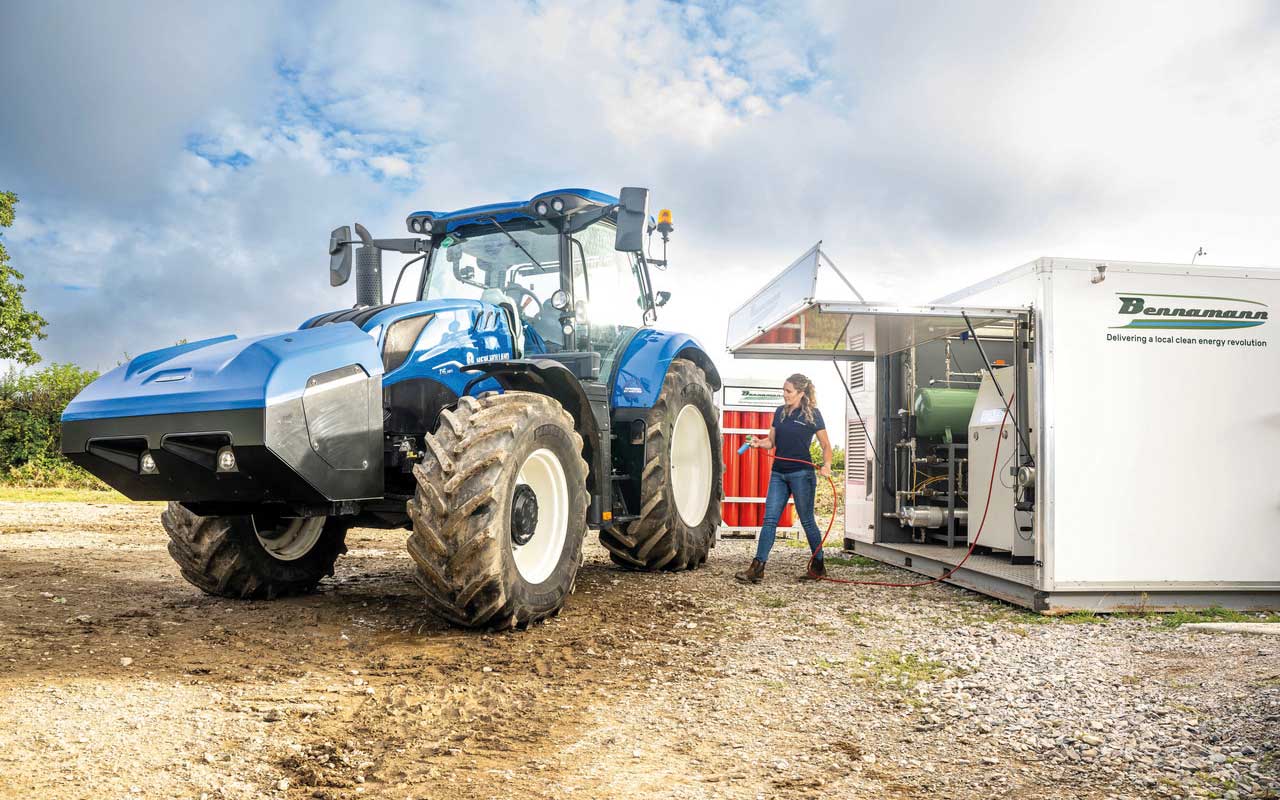
Methane on farm
As an example of the sort of benefits shifting to CNG-powered machinery could bring to growers, New Holland has data from one of its test farms showing that 22,750kg of fugitive methane was captured, producing 20,243kg of fuel-grade methane, displacing nearly 14,000 litres of red diesel (as well as stopping 619t of carbon dioxide equivalent entering the atmosphere).
Alongside this process, 84% of the farm’s electricity needs for the dairy were provided and rainwater that pooled on the lagoon cover was collected, providing 821,000 litres of usable water and increasing capacity by 56%.
This is before looking at further operations where the farm reduced slurry spreading runs by 119 in that year (saving fuel and time) and was able to eliminate the purchase of artificial phosphate and potassium, not only saving money, but reducing the farm’s carbon footprint.
Working with hydrogen
As well as the potential with methane, another compressed gas has made headlines. JCB’s adoption of hydrogen, with a £100m investment in its own hydrogen combustion engine, marks the end of an extensive period of testing and research, and the start of a long journey to getting these machines accepted across both construction and agricultural markets.
Tim Burnhope, group director, says the company remains technology neutral, willing to adapt to offer the best solutions at different power levels.
Battery-powered machines are prevalent at lower horsepowers, though he believes it is unlikely we’ll see that technology move up to significantly more powerful machines.
“While the Fastrac has a rear deck, an electric model with current battery technology would use the full payload capacity and be prohibitively expensive,” he says.
Hydrogen was considered to be the best option after the company researched several other fuel sources.
One of the reasons it discounts methane as a broadly used option is that the UK would reportedly need to increase cow numbers sevenfold to produce enough. Other possibilities that were trialled included ammonia, but Tim says that nearly every other option led the company back to hydrogen.
The hydrogen engine has moved quickly since it was revealed. This year, JCB has received approval from multiple countries to sell the power units, and the UK recently changed road laws to ensure that both hydrogen-powered cars, commercial vehicles and industrial machines can be driven on UK roads.
As with nearly every other alternative fuel, the potential issues around hydrogen are not about its power density. Instead, the availability and transport of the fuel is a concern. JCB investment company HYCAP and the HydraB Group have joined forces to create HyKit to help develop hydrogen refueller delivery options ahead of the wide rollout of hydrogen-powered equipment.
“When you’re using a gaseous fuel, because it is difficult to move large quantities, the key is moving it the shortest distance possible,” Tim explains.
“In a perfect world, hydrogen would be made on farm. Farmers have incredible innovation and understand their energy needs and have the means of producing energy on the farm; and you don’t know what we’ll see in the next 10 years. The future will most likely be a combination of technologies working together – hydrogen will form a large part of that.”
He points to the current production of electricity on farm. During the summer months, solar panels create a peak in energy and this excess could be used to power a farm-scale electrolyser for on-farm production of hydrogen. Studies have also been done into producing hydrogen as a product of the biomethane system.
“We know that hydrogen is a viable replacement for diesel,” Tim concludes. “It combusts at a low temperature and pressure for a clean burn, and we’ve had this independently verified, achieving far better numbers than Stage V. If you look at how far we’ve come in the past 10 years, there really isn’t any idea that is too radical when it comes to alternative fuel sources.”


